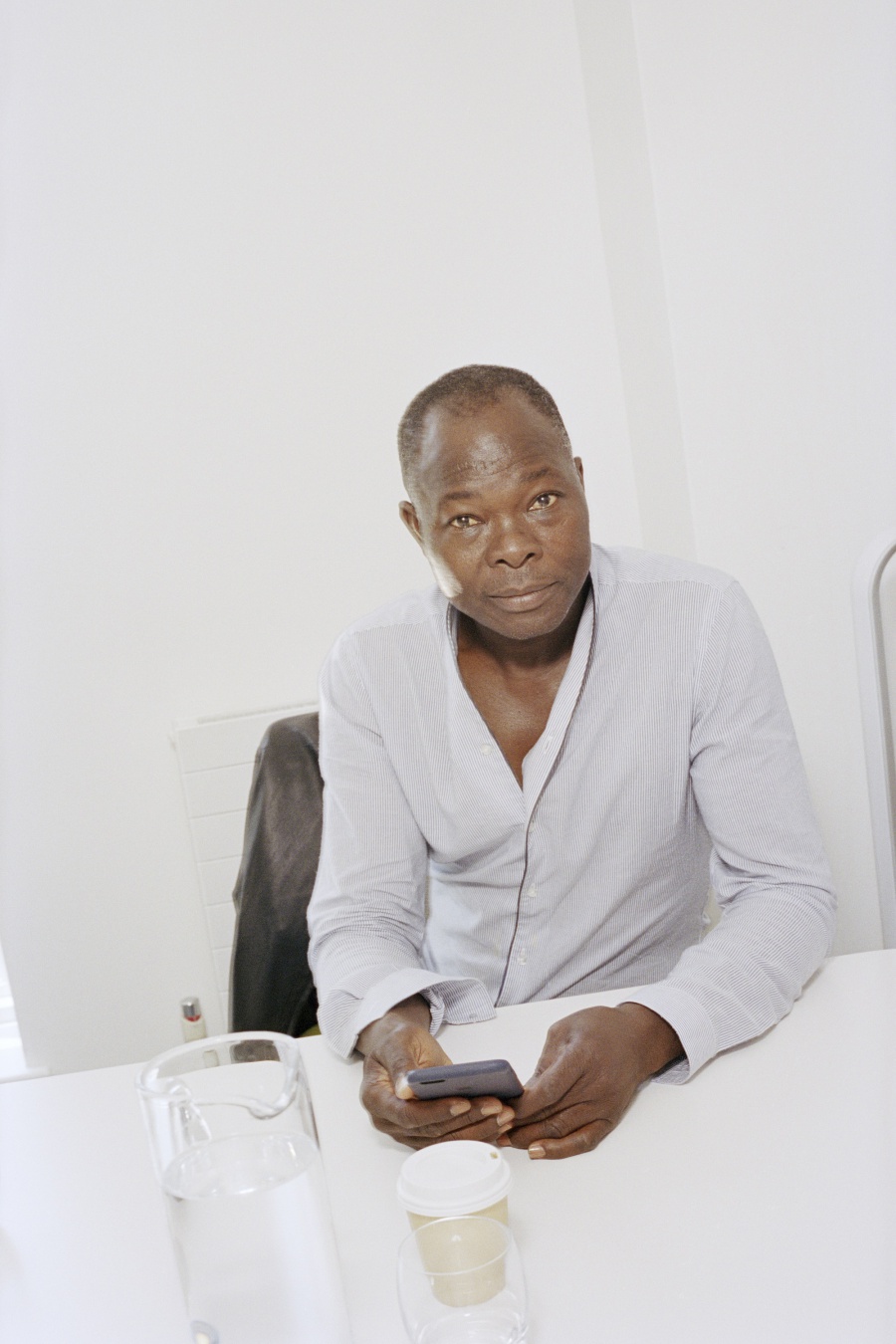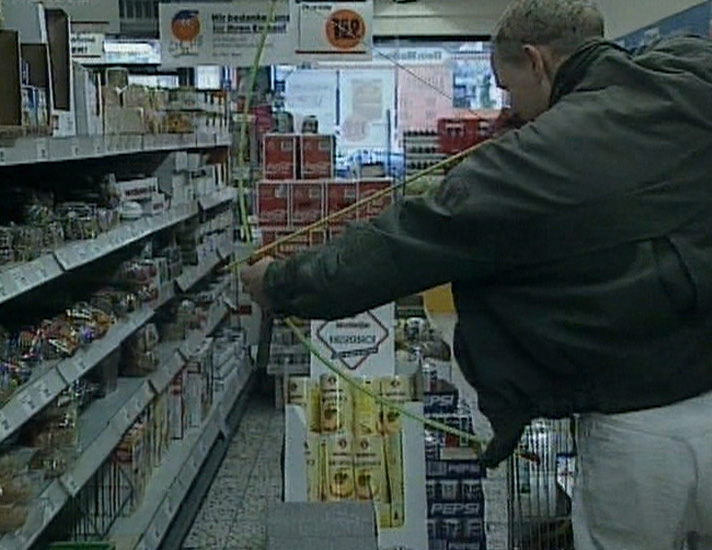The Camera Itself Has This Beautiful, Realistic Structure
28.06.18 | Article by Michele Robecchi | Art, culture, interview | MM13 Click to buy
Marking a major show at The Whitechapel Gallery, the German titan-icon of photography Thomas Ruff talks eBay, photographing space, and the Bechers.

Nudes dr02, 2011.
“I like this kind of automatic art where I don’t have to do that much of the work.”
Michele Robecchi: I would like to start by talking about New Works, the exhibition you recently had at Sprüth Magers in Berlin. The show consists of a series of pictures from the press++ series, where you scanned the front and the back of archival photographs you bought to digitally combine into one single image. How did the idea of working with these particular images come about?
Thomas Ruff: The series started because I was looking for some photographs of spacecraft and astronauts and so on. I was looking especially for press images from the 1960s and 1970s on eBay. When they arrived at my home I was very happy with them, but with time I ended up turning them around and seeing the back. There were handwritten notes by the editors, dates, indications on how to crop a specific image. I thought, wow, this is interesting – the flip side looks nearly as fascinating as the front of the photograph. It also says a lot about the history of these press photographs. The idea then evolved into something else – to make a sequence of images that would simultaneously include both the front and the back. It all happened by chance. And then I started to work out the concept more precisely, and to apply it to other subjects — photographs of aeroplanes, portraits, and the kind of images that normally show up in vintage newspapers.
Michele Robecchi: When I was a picture archivist for an art magazine, I do remember handling a lot of prints, slides and transparencies that had marks and notes written all over them, both on the back and the front. At the time I was surprised that the urgency and the pressure to meet a hard deadline would lead the editorial and design team to do something like that. This was after all the pre-internet era, when printed photographs were the only visual source available.
Thomas Ruff: I suppose it was just working material for the editors. They would mark out specifically the images that they wanted.
MR: You also have a rich variety of subjects. Some are official portraits of movie stars, while others refer to local news.
TR: The bulk of the photographs are from local newspaper photographers, who were sent out on assignment to take photographs of whatever. I think the photographs of singers, dancers, actors and actresses probably come from the management of those artists — those who promote them. These photographs were then also sent to the newspaper, and in time, all of the marks were made on the backs of these, too.
MR: In some cases they had text on the front too, as if it was a caption. One very interesting picture in your exhibition is press++50.08 (2016). It represents a museum guard standing in front of a naked woman on the floor. There is also the name of the guard— Joseph Schmidt. This struck me as odd, but then I realised that if it wasn’t for that explanation, I would have never been able to understand what the picture was about.
TR: That probably has something to do with the newspaper editorial desk. For some reason they wanted to clarify that the man standing in front of the art was called Mr. Schmidt. It is a great photograph. I really tried to get all the good stuff! I actually think the work is the writing on the back. You have the photograph itself, or the cropped photograph, and a caption outlining or explaining a little about what’s going on. But not all of the information included on the back is accurate.
MR: Were you surprised by any of the overlaps, when you started putting them together?
TR: My idea was to make a kind of photomontage, adding words or typed text to the images, that’s why I’ve been working from newspaper archives. There was another series of photomontages I made at the end of 1999 called Plakate that was a lot more political. I thought that it was a nice German tradition, dating back to the 1920s, when a number of artists worked with collaged images. And I like this kind of automatic art where I don’t have to do that much of the work. I just look at the back, I look at the front, and then it depends on how I turn the photograph around — either upside down, or from left to right — before I check the final composition, and that’s basically all the work I have to do!

Press++65.30, 2016.
MR: You started working with found visual materials way before the proliferation of images we are experiencing now. What was your initial motivation?
TR: The first time I did that was in the late 1980s. It actually happened because I needed help. I wanted to take some good photographs of the sky at night for what would turn out to be the ‘Sterne’ series. But with my small telescope and camera, I just wasn’t able to accomplish the effect I wanted to have. It didn’t matter how professionally well educated and equipped I was, I still wasn’t able to take these photographs. I needed the assistance of a professional observatory, so that I could use their archive of negatives of images of the southern hemisphere. One of the major consequences was that I had to give up authorship. For the very first time I was not able to pull the trigger. It was a very hard decision for me. I had to come around to it and accept the idea that in order to make it happen I had to rely on help from other photographers.
Read more in Modern Matter issue 13, The Anti Issue. All images courtesy Sprüth Magers gallery and the artist.

Nudes ar09, 2011.

3D_ma.r.s.09, 2013, aus der Serie: 3D ma.r.s.

Portrat (C. von Heyl), 1985. aus der Serie, Portrats

Portrat (A. Vollmann), 1998, aus der Serie: Portrats.

Portrat (P. Lappat), 1987, aus der Serie: Portrats.



